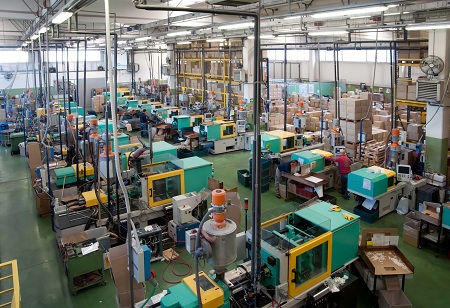The global
injection moulding machine market size is anticipated to reach USD 19.68 Billion by 2023, growing at a Compound Annual Growth Rate of 2.9 per cent during the forecast period. One of the major factors driving the growth of this industry includes the growing automotive industry in the APAC region. Moreover, the surge in demand for automobiles in the APAC countries is bolstering the sales of injection moulding machines in the region. The demand for automobiles in countries such as China, India, Indonesia, and Japan is fostering the growth of the injection molding machine market in APAC.
Injection moulding machines are used in the production of products made of plastics, rubber, metal, and ceramic. These mainly comprise two main parts, one is the injection unit and the other is a clamping unit, which deals with the functioning of the mold. Furthermore, Injection molding machines are also used in several automotive parts, which include lighting systems, bumper, instrumental panel, rear bumper and still cover.
The injection moulding machine offers improved accuracy in manufacturing products. Not just that, it also offers improved flexibility, and a high level of energy efficiency in the process and this helps in manufacturing a wide variety of products.
Economical for large production capacities
The molds are manufactured using steel and therefore this has led to an increase in the cost of injection moulding machines. Therefore, the injection molding process is economical only for large production capacities. The injection moulding machine is primarily used to produce small and precise polymer components but with complex shapes. Also, the process needs expensive tooling. And because of which it is ideal mostly for bulk production. Unfortunately, the production rates can go higher for small mouldings and this is one of the challenges for market growth.
Based on the product type, the injection moulding machine market has been divided into plastic, rubber, metal, ceramic, etc. The demand for plastic injection moulding machines is driven by the rise in demand from the automotive, consumer goods, and packaging end-use industries. One of the major advantages of plastic injection moulding machines is that they facilitate the production of plastic parts with reduced waste that too at lower costs. Moreover, these machines also enable the use of a wide variety of material types which include nylon, polycarbonate, polystyrene, and polypropylene.
Based on machine type, the injection moulding machine market has been classified into hydraulic and all-electric, and hybrid. The domination of hydraulic injection molding is anticipated to continue over the forecast period. This is owing to the enhanced performance and low maintenance cost. Also, the surge in demand from the automotive, consumer goods, and packaging various end-use industries is driving the growth of the hydraulic injection moulding machine market.
